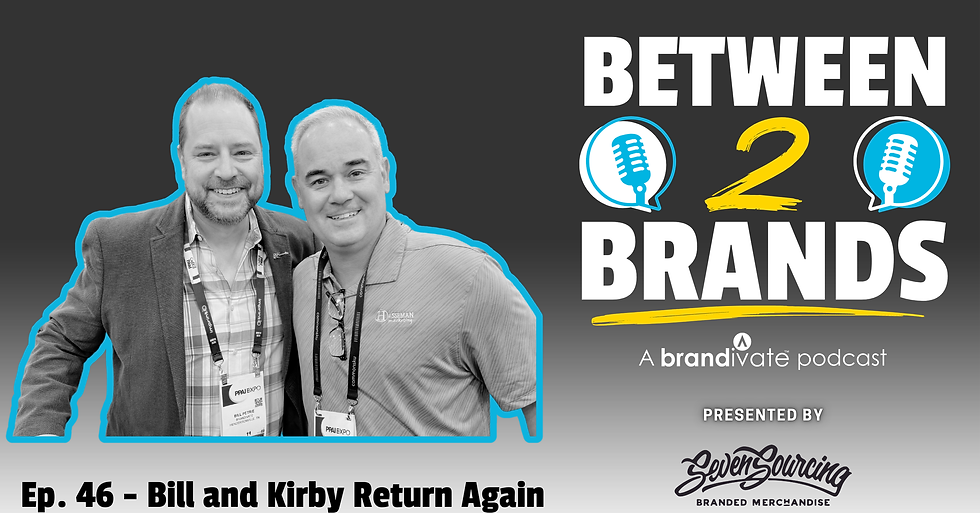Your Brand Doesn’t Mean What You Think It Means
- Bill Petrie

- Aug 10, 2020
- 3 min read
Build a brand that speaks to your clients’ needs and moves them to work with you.

It goes without saying that the world we live in today is radically different from the one we existed in just five months ago – which makes me wonder why I just wrote that if it goes without saying, but I digress. However, one thing that hasn’t changed in the promotional products industry: the single biggest challenge for distributors is differentiation. In a climate where budgets are slashed and marketing without pandering to your audience – or being downright offensive – is a struggle, how can your brand and message stand out?
The fact remains that over 25,000 distributors are selling the same merchandise, from the same supply chain, and to the same target audience, which means standing out in a crowded marketing place concurrently both the most critical and most challenging undertaking. The most logical way to begin is by taking a hard, honest look at your brand and messaging – beginning with addressing these two questions:
How does your brand fit into the marketplace? Your brand will have to look different if you are in an urban area instead of a rural one. It’s also important to look at the types of clients you have and how you can leverage your expertise in those specific industries. In other words, your brand needs to exude the core strengths of your organization. Looking at your brand from this perspective will help you see how it fits into your marketplace.
What does your target audience want from your brand? Once you understand how your brand fits into the marketplace, put yourself in your target audience’s place and look at your brand from their point of view. What do they want and need from you – is it funky creativity or pragmatic promotions? Is it a fresh approach to each project or consistency across all campaigns? Regardless, it’s critical that you embrace that your brand is more about what your clients want and need than what you believe it means.
After you have a full understanding of how your brand fits into the marketplace and what your target audience needs from your brand, there are three core steps to building your brand:
Consistency – Powerful brands develop as people believe that the brand will deliver based on expectations. Each experience turns into perception, and, in turn, those perceptions turn into expectations. If your brand doesn’t meet consumer expectations in every client interaction (sales, marketing, delivery, quality, creativity, billing, customer care, etc.), your audience will quickly become disillusioned. More importantly, they will find a brand that does consistently meet expectations.
Persistence – Brands aren’t built overnight. It takes patience, grit, and resilience not to give up. Leverage social media to continually communicate brand experiences that consistently support your message – unique projects, expressions of gratitude from your clients, or case histories. This is how you can develop an awareness of your brand that will lead directly to the goal of brand preference.
Restraint – Stay true to what you do best and resist the temptation to extend your brand into new markets if they do not consistently support your message and expertise. Just because you have proficiency in providing promotional products to the medical field does not mean those skills will profitably translate to the hospitality industry. They are two very different audiences with very different needs and expectations. If you decide to target new markets, thoroughly analyze the opportunities to ensure they are an appropriate fit for your brand.
As Paul Bellantone, President and CEO of Promotional Products Association International (PPAI), has stated so eloquently, “the pace of change will never be as slow as it is today.” Because of that and the continual evolution of your client base, it’s critically important to take an honest look at your brand messaging every 12 – 18 months and answer the following questions:
Does your brand and messaging convey who you are, what you do, and how you make your clients better?
Does the messaging (including your website, marketing materials, etc.) contain buzzwords that are now outdated?
Does your brand convey the correct mix of professionalism, personality, and expertise to your clients and prospects in a way that will grow your business?
Remember, your brand is less about what you think it means and more about what emotions it elicits from your target audience. Build a brand that speaks to your clients’ needs and moves them to work with you.
_edited.png)



Comments